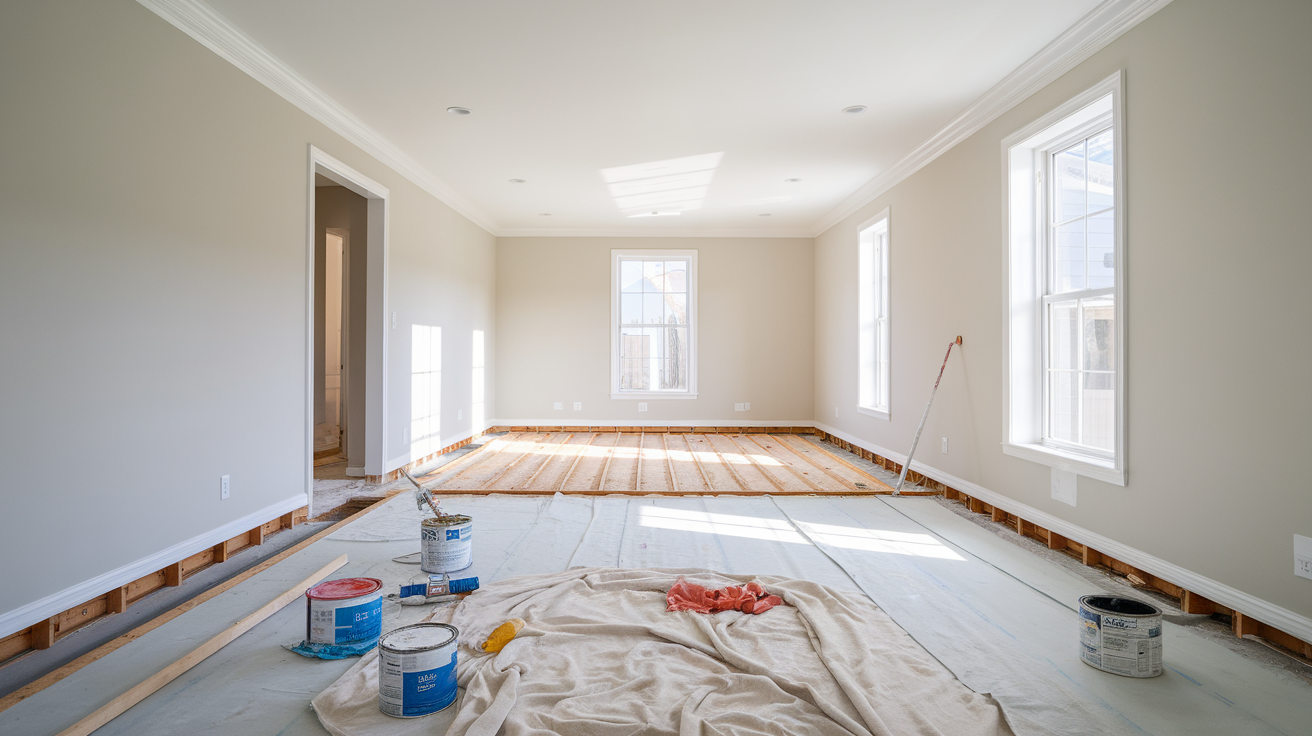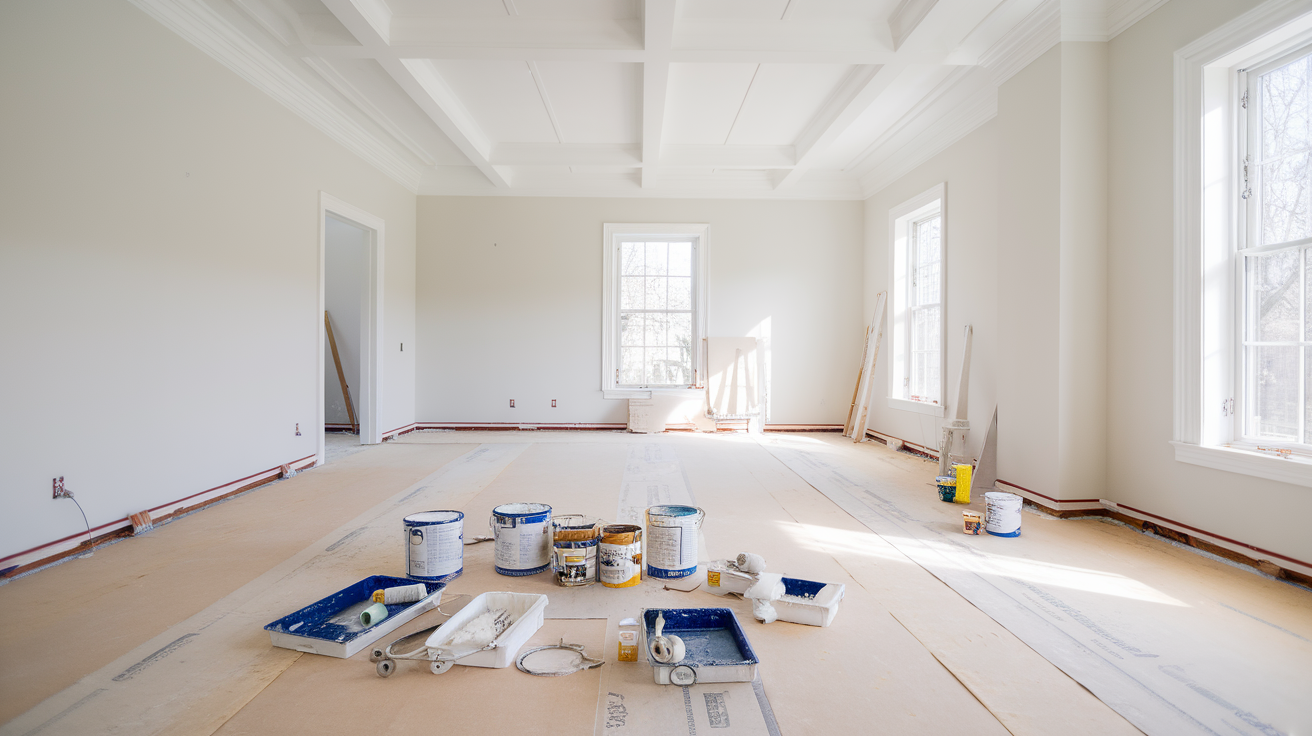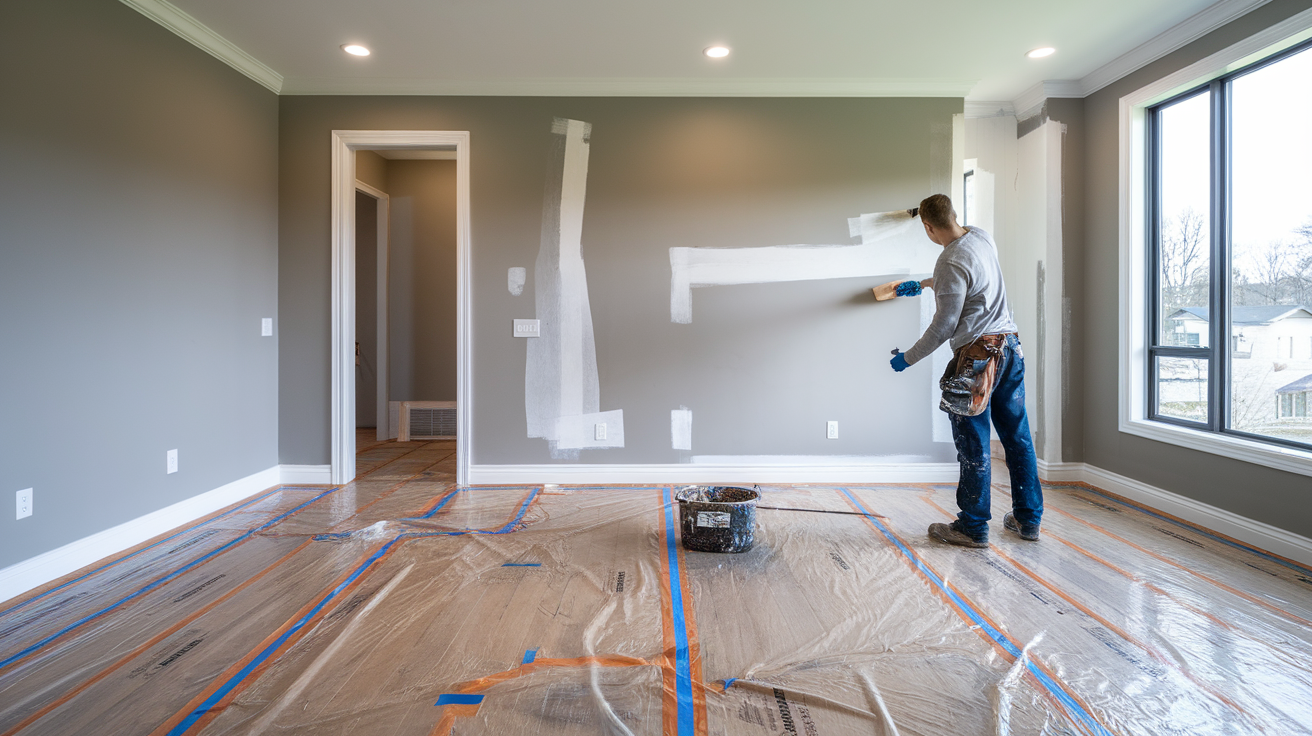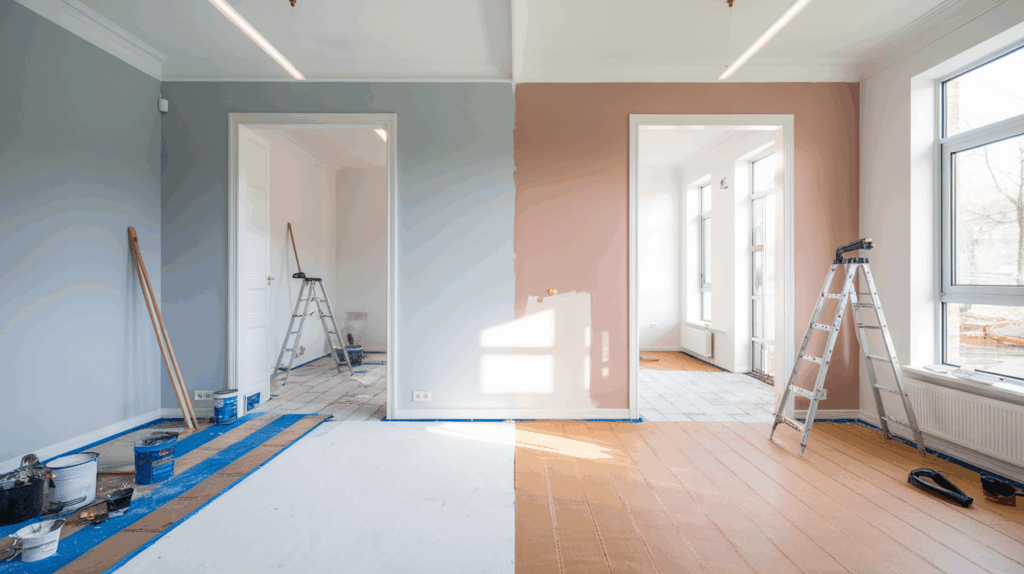Starting a home renovation always brings up a lot of questions. One of the first things that crossed my mind was whether to paint before or after putting in new flooring.
I quickly realized that the choice I made would impact both how things looked and how smoothly everything moved along.
Getting the timing right really matters. For me, it wasn’t just about saving time; it was also about avoiding mistakes that could cost more money down the line.
I found that painting first gave me easier access to the walls and ceilings. However, painting after the floors were in place helped protect them from stray paint marks and potential damage.
In this guide, I’ll discuss the pros and cons of each approach based on my hands-on experience.
I hope you’ll feel more confident in deciding what works best for your space by the time you’re done reading.
Should You Paint Before or After Flooring Installation?

You might wonder if you should paint before or after flooring installation. This is a common question when tackling home renovations.
The answer depends on your goals, your timeline, and the kind of floors you’re installing.
- Painting before means you paint the walls first, then install the floors. This option can be easier because you don’t have to worry about splattering paint on the new floors. You can also reach all the corners and edges with ease.
- Painting after means installing the floors first and then painting the walls. This can protect your new flooring from paint splashes during the job and help you get a smooth, clean line where the walls meet the floor.
Both methods have pros and cons. Choosing the best one depends on your needs. Let’s look at the benefits and challenges of each.
Painting Before Flooring Installation

When you decide to paint before flooring, there are a few things to consider.
Pros
- Protection: By painting first, you can safeguard your new floors from any accidental paint splatters and spills.
- Efficiency: Without the flooring in place, it’s easier to reach edges and corners, which can make your job quicker and smoother.
- Cost-Effective: Painting before flooring might save you some time and effort, potentially reducing the need for touch-ups on the baseboards once the floors are installed.
- Less Mess: It can help minimize the mess and hassle of cleaning paint off of new floors later on.
But there are some downsides too.
Cons
- Dust Accumulation: Sanding and prep work can create a lot of dust. That dust might settle on freshly painted walls, making it harder to get a clean finish.
- Potential Damage: Installing flooring can be a bit rough on the walls. There’s a risk of wall damage during the floor installation process, especially if you’re working with heavy materials.
- More Prep Work: You may need to spend more time covering the floors before painting to avoid accidental spills.
Best For
This approach works best when flooring is being replaced and the subfloor is exposed.
-
Open Space: It’s also ideal for larger, open spaces where there’s less risk of damaging walls during the flooring installation.
Here’s the table with the last cons and best for added:
| Pros | Cons | Best For |
|---|---|---|
| Protection from paint splatters and spills. | Dust accumulation from sanding and prep work. | Flooring is being replaced. |
| Efficiency in reaching edges and corners easily. | Potential damage to walls during floor installation. | Subfloor exposed. |
| Cost-effective with fewer touch-ups on baseboards. | More prep work is needed to cover the floors to prevent paint spills. | Larger, open spaces where walls are less likely to be damaged. |
| Less mess from accidental paint drips on new floors. | Risk of spills if the floors aren’t properly covered. | Projects with plenty of time for preparation before flooring. |
Painting After Flooring Installation

When you choose to paint after flooring installation, there are some clear advantages and a few things to watch out for.
Pros
- Protection: You can preserve your new floors from any accidental damage during the painting process. You won’t have to worry about paint splatters while you work.
- Aesthetic Precision: Painting after the floors are in place gives you a clean, seamless look where the walls meet the flooring. You’ll be able to avoid uneven edges or unsightly gaps.
But there are also some downsides to consider.
Cons
- Risk of Paint Drips: Even if you’re careful, there’s always the chance of paint splattering onto the new floors. It’s something to keep in mind.
- Additional Prep Work: You’ll need to spend more time on careful masking and protection to keep the floors safe while you paint. This can slow you down.
Best For: This approach works well for renovations where existing flooring is being replaced and new flooring is installed first. It’s also good if you want to ensure your floors stay clean and protected.
Here’s a table for painting after flooring installation:
| Pros | Cons | Best For |
|---|---|---|
| Protection: Preserve your walls from potential damage during floor installation. | Risk of paint drips: The Possibility of paint splattering on new flooring. | Renovations where existing flooring is being replaced and new flooring is installed first. |
| Aesthetic precision: Achieve a seamless look where walls meet the floor. | Additional prep work: Requires careful masking and protection of floors. | Projects where you want a clean, crisp look and can take the time to protect floors. |
This table summarizes the main pros, cons, and ideal situations for painting after flooring installation.
Factors to Consider
When deciding whether to paint before or after flooring installation, there are a few important factors to keep in mind. These can help you choose the right approach for your project.
-
Type of Flooring: Different flooring materials may need different approaches. For example, hardwood floors might be more sensitive to paint splatters than tile or vinyl. Be sure to consider what type of flooring you’re installing.
-
Room Usage: Think about how much traffic the room will get. High-traffic areas, like the kitchen or hallway, might benefit from painting after the flooring. That way, you avoid any accidental damage to the floors.
-
Timeline: The drying and curing times for both paint and flooring matter. If you paint first, you’ll need to wait for the paint to dry completely before installing the floors. If you install the floors first, you’ll need to protect them while the paint dries.
These are the key things to think about. They’ll help you make the right decision based on your needs and the specifics of your project.
Expert Recommendations
When it comes to painting before or after flooring installation, experts have some solid advice.
-
Industry Insights: Many experts recommend painting before flooring installation. This helps to minimize risks like paint splatters and accidental messes on your new floors. It also allows you to focus more on the finish, without worrying about protecting the floors.
-
Professional Advice: If you’re unsure, it’s always a good idea to talk to a contractor. They can offer tailored guidance based on your specific project. Contractors know what works best for different types of flooring and room layouts.
Taking expert advice can save you time and effort and ensure that you make the right choice for your home.
Styling Scenarios
Let’s examine two real-life scenarios. These examples can help you understand how the timing of painting and flooring installation affects the result.
Scenario 1

A homeowner decides to paint before installing hardwood floors. This approach leads to a smoother finish because they can paint every corner and edge without worrying about the flooring.
It’s a cleaner look, and the paint goes on without obstruction. After the paint dries, they can install the hardwood without any mess, making the job easier and faster overall.
Scenario 2

Another homeowner chooses to install the flooring first, which causes some issues with paint drips.
While the floors are protected during installation, the homeowner struggles with keeping them clean while painting.
It takes more effort to cover the floors and prevent spills. They also find that getting a perfect line where the walls meet the floor is trickier than they expected.
Each approach has benefits and challenges. Your choice depends on the type of flooring, the space, and your time for prep work.
Conclusion
Both approaches, painting before or after flooring installation, have merits. The best choice depends on your specific project needs.
If you want a clean, mess-free experience, painting before may be the way to go. On the other hand, if protecting your floors during installation is a priority, painting after might be the better option.
Whichever method you choose, remember that careful planning and preparation are key to a successful renovation.
Taking the time to consider your space, flooring type, and timeline will ensure the process goes smoothly.
By understanding the pros and cons of each approach, you’ll be able to make an informed decision that suits your project and gives you the best results. Happy renovating!
Frequently Asked Questions
Can I Paint Over New Flooring?
It’s not recommended to paint over new flooring. It could cause stains, make cleaning difficult, and damage the floor finish. Always protect your floors while painting.
Should I Paint My Walls or Trim First?
It’s best to paint the walls first. This way, any mistakes won’t affect your trim, and it’s easier to touch up the trim afterward.
How Do I Protect My Floors While Painting?
To cover and protect your flooring during the painting process, you can use drop cloths, plastic sheets, or painter’s tape. Be sure to secure them well to avoid spills.

